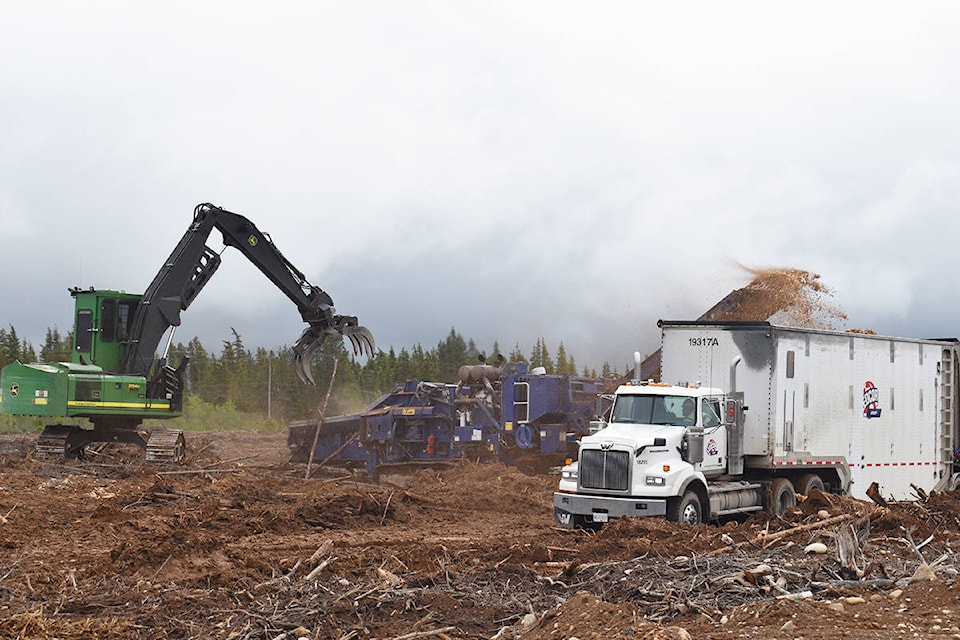Terrace Community Forest (TCF) and Coast Tsimshian Resources LP each received grant money from the Forest Enhancement Society of B.C. (FESBC) for projects to add value to wood waste that would have otherwise been burned.
TCF was approved for $443,400 to transport the wood waste from their forest thinning project near Onion Lake to a pellet plant in Burns Lake.
Coast Tsimshian Resources LP (CTR) was awarded $874,562 to fund their project spanning 94,000 cubic metres.
READ MORE: Terrace Community Forests moves forward on forest-thinning project
The two Terrace projects are part of the 38 individual grants rewarded across B.C., totalling more than $27 million.
The Ministry of Forests, Lands, Natural Resource Operations and Rural Development (FLNORD) says these projects will employ forestry contractors and mill workers who produce electricity, wood pellets and pulp at mills, turning wood waste into a potential source of electricity, heat energy, and pulp products.
“Nothing frustrates people more than seeing piles of slash go to waste rather than be used to help create jobs,” said Ravi Kahlon, parliamentary secretary for FLNORD in a press release.
Kahlon made the announcement at the Pacific BioEnergy plant in Prince George on Nov. 13, and was joined by industry and FESBC representatives, and Mackenzie Mayor Joan Atkinson.
Carl Sampson, chief operating officer for Lax Kw’alaams Business Development LP, which owns CTR, says the business is partnering with Skeena Sawmills over the next two years to utilize a wider profile of low-grade fibre that would otherwise be unusable.
“This opportunity also provides additional fibre for the local sawmill as well as increased economy for contractors and suppliers in the region,” Sampson says.
Kim Haworth, TCF general manager, says a majority of the money will be used to cover trucking costs associated with delivering the wood waste to Burns Lake, though that could change if the recently-opened Skeena Bio-Energy pellet plant, a sister operation to next-door Skeena Sawmills here, is able to take on more capacity.
“I risk-managed and made sure that if that wasn’t the case, then this money would be available to deal with that waste fibre so it could be utilized in a processing facility versus putting a match to it and burning it, which is a normal hazard abatement practice,” Haworth says.
“Before, the tops and the limbs had basically had no value, but now with the advent of these pellet plants and the product they produce, there’s now a value on that wood so we can utilize the whole tree. It’s awesome, we’ve never had the capacity to be able to do this, ever.”
brittany@terracestandard.com
Like us on Facebook and follow us on Twitter
